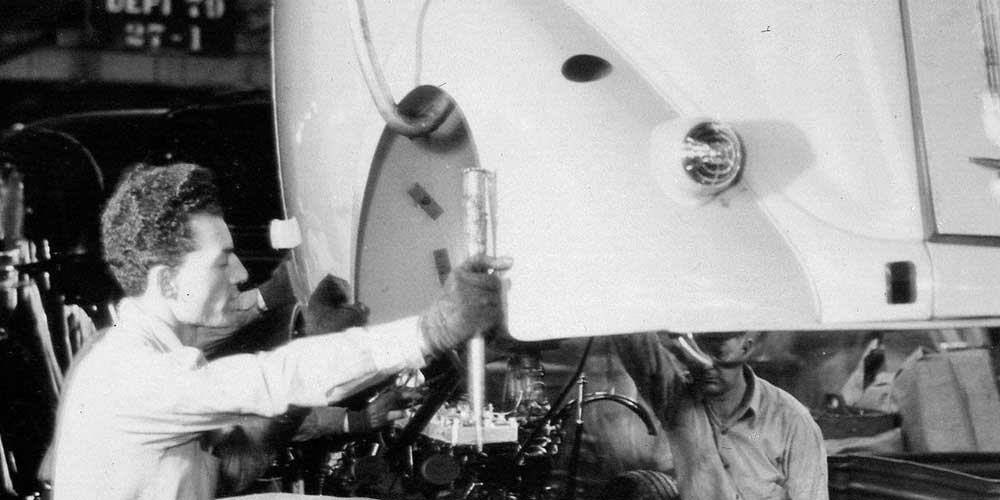By Robert Tate, Automotive Historian and Researcher
Images courtesy of Ford Archives, GM Media Archives, Detroit Yes, Arthur Radebaugh and the Robert Tate Collection
Published 6.24.2020
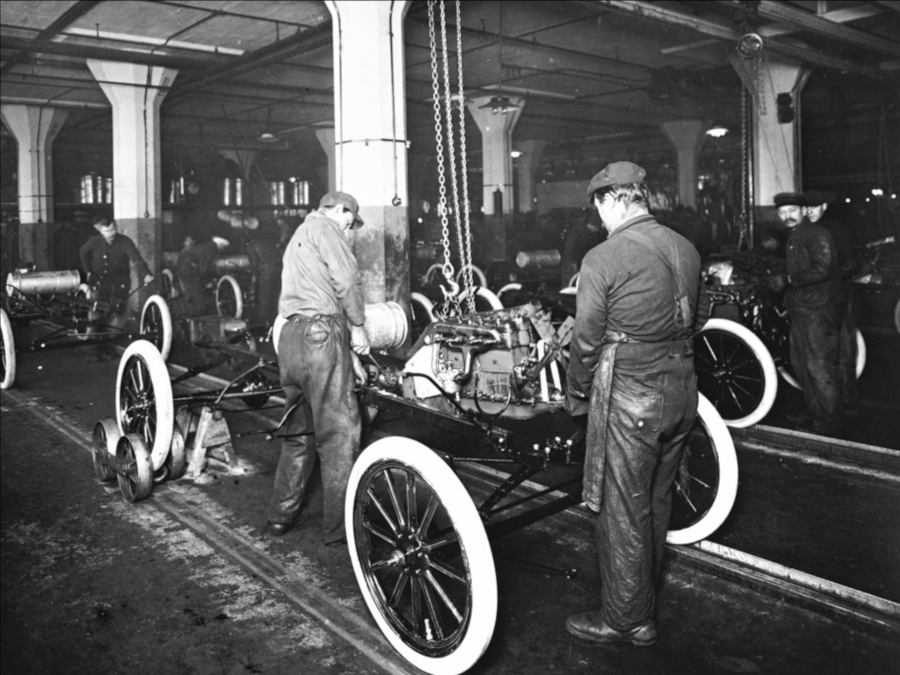 Ford Highland Park assembly line (Ford Motor Company Archives)
Ford Highland Park assembly line (Ford Motor Company Archives)
The American automobile has always contributed to the growth of our economy. From the early days with Henry Ford to the industry’s first female CEO, Mary Barra of General Motors, American automotive companies have always manufactured great vehicles. Detroit earned and continues to retain the title of Motor City, the auto capital of the world.
Many books have been written and countless stories have been told about the American automotive industry and its culture. This story is dedicated to the men and women who contributed much time and effort to make the industry what it is today. Also, great automotive images helped shape the American spirit and will always be a part of our culture and history for generations to come.
The first image of this story highlights Ford Motor Company assembly line workers at Highland Park. The assembly line manufacturing process at Ford’s Highland Park factory changed the way Americans made automobiles. Ford used gravity chutes to transfer parts and materials from one operation to another. On Monday, January 5, 1914, the Ford Motor Company announced the working day was shortened from nine hours per day to eight. Many innovative ideas originated at the Ford plant in Highland Park.
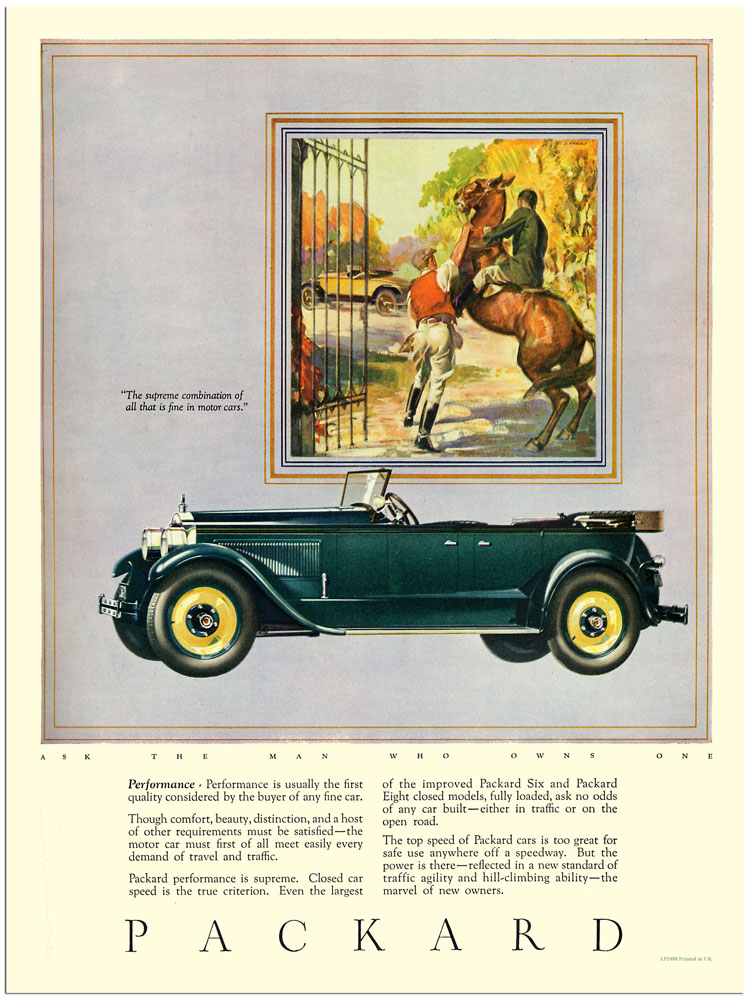 1920s Packard adverising illustration (Robert Tate Collection)
1920s Packard adverising illustration (Robert Tate Collection)
The Packard nameplate was a great symbol for the manufacturing business in Detroit. In 1905, architect Albert Kahn constructed the first structurally reinforced concrete factory in the world. The building had two stories, with a third floor added later. Packard introduced many great looking automobiles that many consumers thoroughly enjoyed. Packard introduced many great automotive advertising illustrations, which some consider to be works of art, accompanied by the slogan “Ask the man who owns one.”
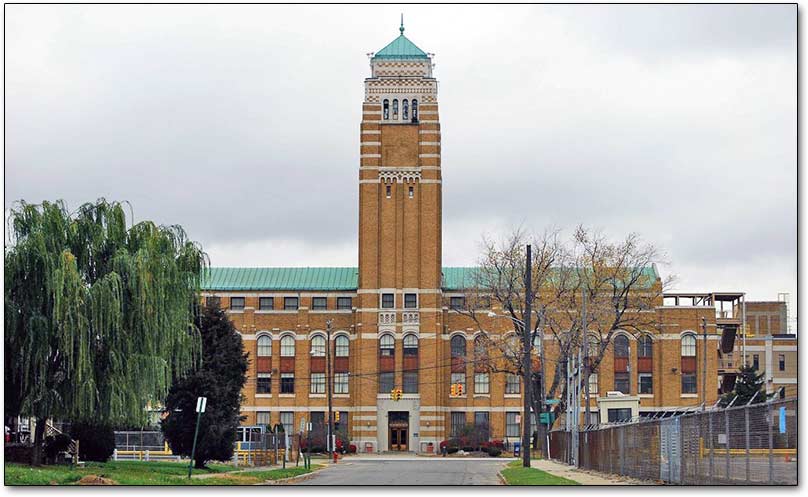 The American Motors Building in Detroit
The American Motors Building in Detroit
The American Motors Building in Detroit was located on Plymouth Road. It was designed by architect Amendeo Leoni and opened in 1937 as part of the Nash Kelvinator Corporation. Nash Kelvinator and Hudson Motors merged in 1954, becoming American Motors. After the merger, the building was focused on research and design for AMC products. In 1973, the company left its headquarters for another location in Southfield, and AMC was later sold to Chrysler for $2.3 million.
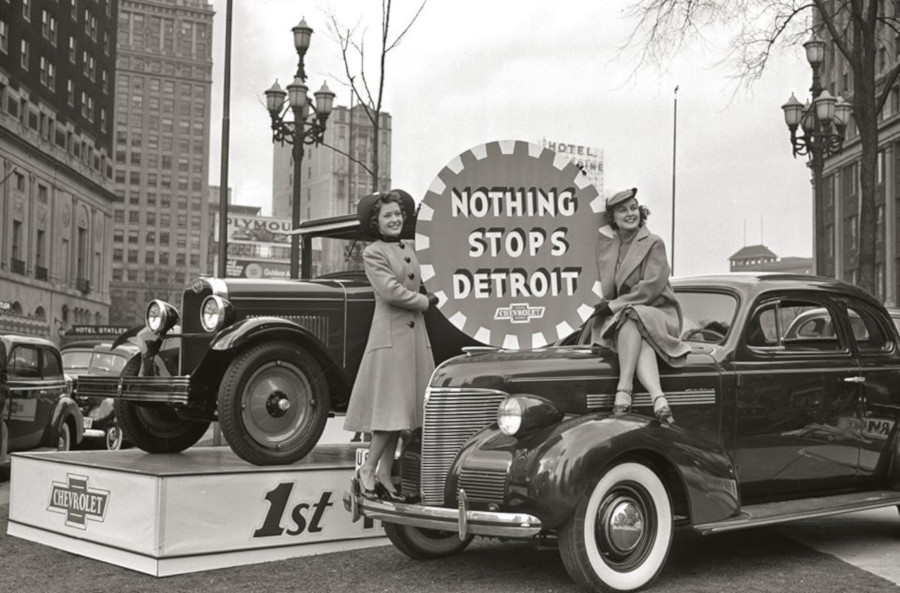 1940s Chevrolet advertising photo (GM Media Archives)
1940s Chevrolet advertising photo (GM Media Archives)
In 1939, downtown Detroit was the home of many automotive promotions, including one to introduce the new 1939 Chevrolet Master Deluxe Sport Coupe model to the public. The display featured a 1920s Chevrolet model along side a new model Chevrolet with two ladies holding a advertising sign that said “Nothing Stops Detroit.”
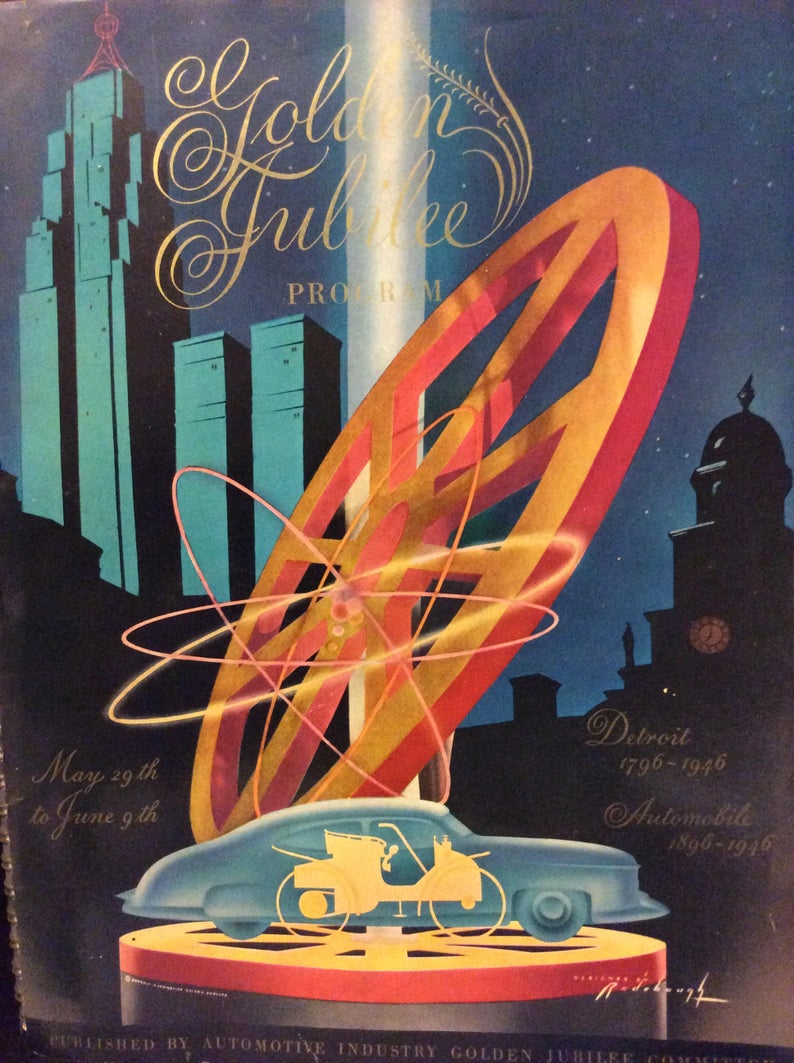 1946 Automotive Golden Jubilee Parade program (Arthur Radebaugh)
1946 Automotive Golden Jubilee Parade program (Arthur Radebaugh)
The Automotive Golden Jubilee took place in Detroit in 1946. This was a spectacular time to celebrate 50 years of automotive history and how automobile companies started. The event was initiated by members of the Automobile Manufacturers Associationand included a parade that was one of the best tributes to Detroit and the automobile. The parade also included speeches along with dinner parties and awards. Also, in attendance were some of the surviving pioneers of the auto industry. The parade took place on Woodward Avenue.
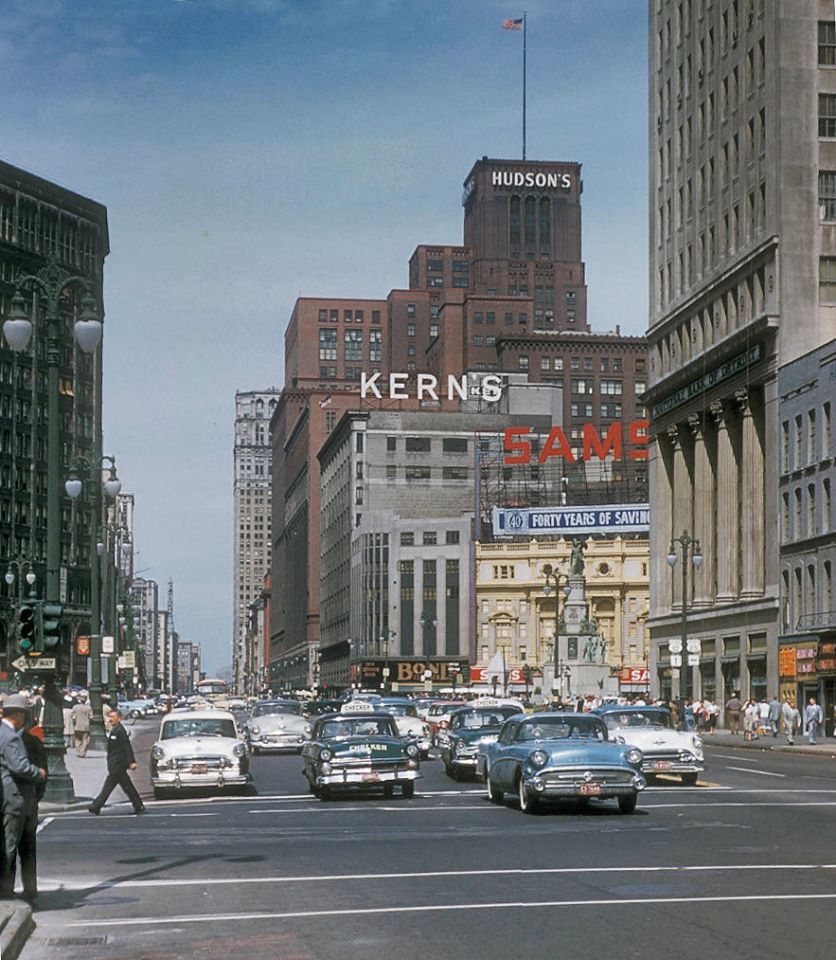 1950s image of Woodward Avenue in downtown Detroit
1950s image of Woodward Avenue in downtown Detroit
During the 1950s, Detroit traffic was remarkably busy for downtown shoppers. The city offered many great stores for consumers to buy merchandise. I remember as a young kid during the 1960s my mother purchasing many toy cars for me from Kern’s and many other stores.
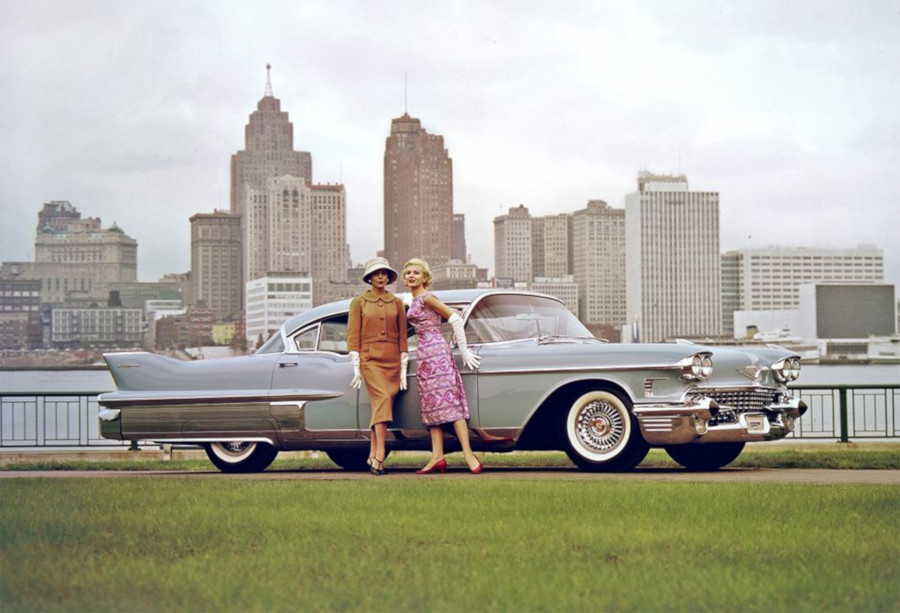 1958 Cadillac photo taken on Belle Isle (GM Media Archives)
1958 Cadillac photo taken on Belle Isle (GM Media Archives)
Detroit was also used for a backdrop for automotive photographs. For example, this 1958 Cadillac image was photographed at Belle Isle Park with a beautiful view of downtown in the background. All 1958 Cadillacs, from the lowest-priced Series 62 models up to the Fleetwood Seventy-Five models, sported long, pointed tail fins.
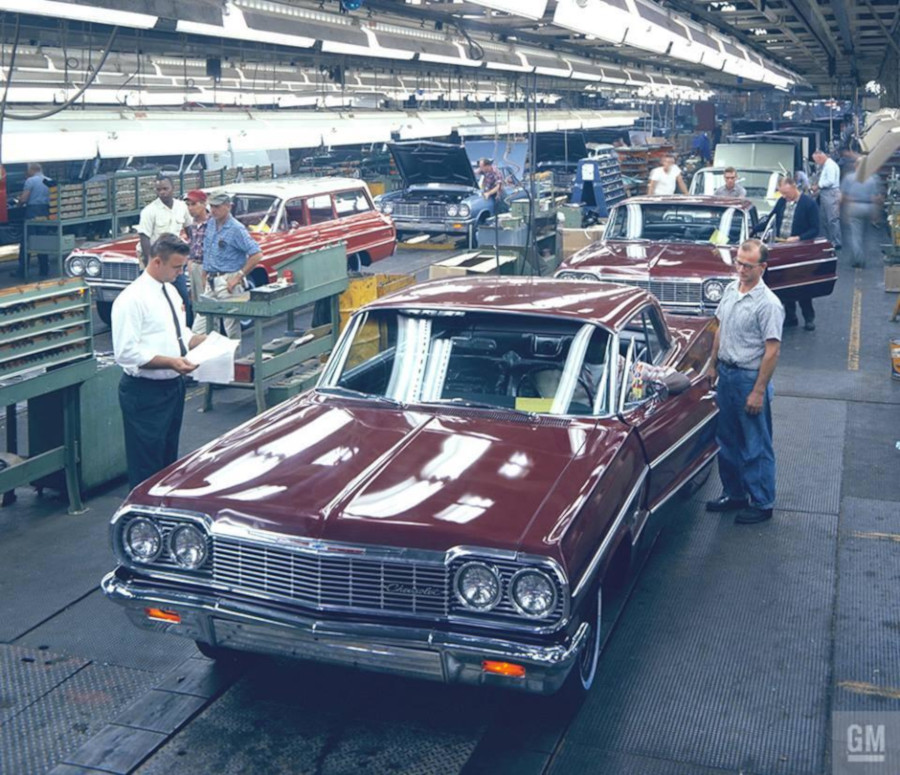 1964 Chevrolet assembly line (GM Media Archives)
1964 Chevrolet assembly line (GM Media Archives)
The last image of this story highlights the men and women who helped put America on wheels. The 1964 Chevrolets were popular models, including the Impala four-door sedan which cost $2,779.
In conclusion, Detroit remains the world’s Motor City, the center of its history and culture.
Bibliography
Dammann, George H. “Illustrated History of Ford.” Crestline Publishing, 1970.
Szundarek, Robert G. “How Detroit Became the Automotive Capital.” 1996.
Dammann, George H. ”Sixty Years of Chevrolet.” Crestline Publishing, 1972.
Detroit Automotive Golden Jubilee Collection, 1946. Detroit Public Library.


